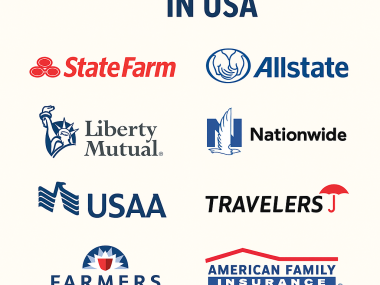How to Get a Student Loan with No Cosigner in Canada 2025
Pursuing higher education in Canada is an exciting journey, but it often comes with significant financial burdens. If you’re a student without access to a cosigner, the challenge of securing funding can feel overwhelming. The good news? It’s absolutely possible to get a student loan with no cosigner in Canada—you just need to know where to look and how to position yourself as a strong applicant.
This guide breaks down all your options, including government-backed loans, private lenders, and smart financial strategies to help you fund your studies independently.
Understanding Student Loan Types in Canada
Before exploring no-cosigner loan options, it’s important to understand the key types of student loans available:
Federal Loans
Canada’s federal government offers loans through the Canada Student Financial Assistance Program (CSFA Program). These loans are primarily need-based and often do not require a cosigner, especially if you meet the income and residency requirements.
Provincial and Territorial Loans
Each province and territory has its own student financial assistance program. Some are more flexible with cosigner requirements, making them an excellent first stop for students without financial backing.
Private Student Loans
Private financial institutions may offer student loans, but they often assess risk more stringently. While many require a cosigner, there are lenders who offer no-cosigner student loans—especially if you have good credit or consistent income.
Explore Provincial Student Aid Programs
Ontario Student Assistance Program (OSAP)
OSAP provides loans and grants to eligible Ontario residents. Most students don’t need a cosigner as the assessment is based on financial need, income, and academic status.
Alberta Student Aid
In Alberta, student aid is split between loans and grants. No cosigner is required for provincial loans, and funding can be used for tuition, books, and living expenses.
British Columbia StudentAid BC
StudentAid BC offers non-cosigned loans and grants for full-time and part-time students. Applications are assessed on financial need rather than credit history or collateral.
💡 Tip: Check your home province’s official student aid website for updated guidelines, eligibility, and deadlines.
8 Practical Ways to Get a Student Loan Without a Cosigner in Canada
1. Build and Improve Your Credit Score
A strong credit score increases your chances of loan approval without a cosigner. Begin by:
- Paying bills and credit card balances on time
- Keeping credit utilization below 30%
- Avoiding unnecessary debt
If you’re just starting out, consider applying for a secured credit card or student credit product to begin building credit responsibly.
2. Demonstrate Income or Employment Stability
If you work part-time or have a steady income, lenders may view you as lower-risk. Some private lenders offer student loans to those who can prove:
- Regular income from employment
- Freelance or contract work
- Consistent monthly cash flow
Even small, consistent income can make a difference in your loan application.
3. Apply for Grants, Scholarships, and Bursaries First
Why borrow money when you don’t have to?
Canada has thousands of scholarships and grants for domestic and international students. These do not require repayment and are often awarded based on:
- Academic performance
- Financial need
- Community involvement
- Minority or marginalized group status
Websites like ScholarshipsCanada.com and Yconic can help you find opportunities tailored to your profile.
4. Choose Affordable Institutions or Programs
Studying at a more affordable institution or choosing a shorter program can reduce the amount of funding you need—and therefore the risk perceived by lenders. Community colleges and public universities tend to be more cost-effective than private institutions.
5. Consider Income-Share Agreements (ISAs)
Some Canadian institutions and private entities offer income-share agreements, where you pay a percentage of your future income instead of taking out a traditional loan. These typically don’t require a cosigner and can be a low-risk way to fund your studies.
6. Compare Lenders That Offer No-Cosigner Student Loans
Some private lenders specialize in student loans without requiring a cosigner. When comparing offers, look for:
- Competitive interest rates
- Flexible repayment terms
- Grace periods after graduation
- No penalties for early repayment
Be sure to read the fine print and understand the total cost of borrowing before committing.
7. Leverage On-Campus Jobs or Work-Study Programs
Working on campus or through government-funded work-study programs helps offset expenses and shows financial independence. Bonus: many of these jobs are flexible and work around your academic schedule.
8. Seek Guidance from Financial Aid Advisors
Your school’s financial aid office is an invaluable resource. They can:
- Help you understand available loans, grants, and scholarships
- Assist with loan applications
- Offer budgeting tips to reduce your reliance on borrowing
Don’t hesitate to schedule a meeting—they’ve helped hundreds of students in your position.
Stay Informed About Repayment Plans
Once you’ve secured funding, be proactive about loan repayment:
- Understand your repayment schedule and grace period
- Explore income-based repayment options
- Look into loan forgiveness programs (especially for healthcare or education graduates)
Financial literacy is key to avoiding long-term debt traps.
FAQs: Student Loans Without a Cosigner in Canada
Q1: Can international students get a student loan without a cosigner in Canada?
A: It’s difficult, but not impossible. Some private lenders offer non-cosigned loans for international students, often at higher interest rates. Scholarships and on-campus work opportunities are also valuable alternatives.
Q2: What if I have poor credit? Can I still qualify for a student loan?
A: While a poor credit score can limit your options, some provincial programs prioritize need over credit. Focus on improving your credit and demonstrating financial responsibility to increase your chances.
Q3: Are there scholarships specifically for students without cosigners?
A: While most scholarships aren’t based on whether you have a cosigner, many are targeted at students with financial need or lacking family support—both common in no-cosigner situations.
Q4: What if my application is rejected?
A: Don’t give up. Ask the lender for feedback, improve any weak points (credit score, income, documentation), and reapply. Also explore other funding routes like grants or ISAs.
Q5: Will a part-time job improve my chances?
A: Yes. Regular income—even from part-time work—can positively impact your application by proving your ability to handle financial obligations.
Q6: How much can I borrow without a cosigner?
A: Loan limits vary. Federal and provincial programs often have caps, while private lenders may determine amounts based on your income, creditworthiness, and school expenses.
Q7: Can I apply for multiple student loans without a cosigner?
A: You can, but be cautious. Multiple credit checks can lower your credit score. Focus on quality over quantity—apply to lenders with high approval odds based on your profile.
Q8: How long does it take to get approved?
A: Government loan approvals can take a few weeks. Private lenders might offer faster decisions—sometimes within days—depending on how complete your application is.
Q9: Can I use the loan for living expenses?
A: Yes. Most student loans cover tuition, books, and living expenses. Be sure to budget wisely to stretch your funds across the academic term.
Q10: Are there government programs specifically for students without cosigners?
A: Not explicitly, but most government loans (like OSAP or StudentAid BC) don’t require cosigners if you meet the eligibility requirements. Always review your province’s policies.
Final Thoughts
Getting a student loan with no cosigner in Canada may seem daunting at first—but with the right preparation, resources, and support, it’s entirely achievable. By exploring provincial aid, maintaining financial discipline, and seeking alternative funding, you can take control of your education financing independently.
Investing in your education is one of the smartest financial moves you’ll make. With the right strategy, you won’t need anyone else to back you up—you’ll do just fine on your own.
- Media Liability Insurance Definition, Benefits and Coverage.
- A Review of CAA Insurance Company
- What is E-Naira: A Review Of Nigeria’s Digital Currency
- USDA Loans for First-Time Homebuyers
- Top 5 Financial Apps for Millennials in Australia 2025











